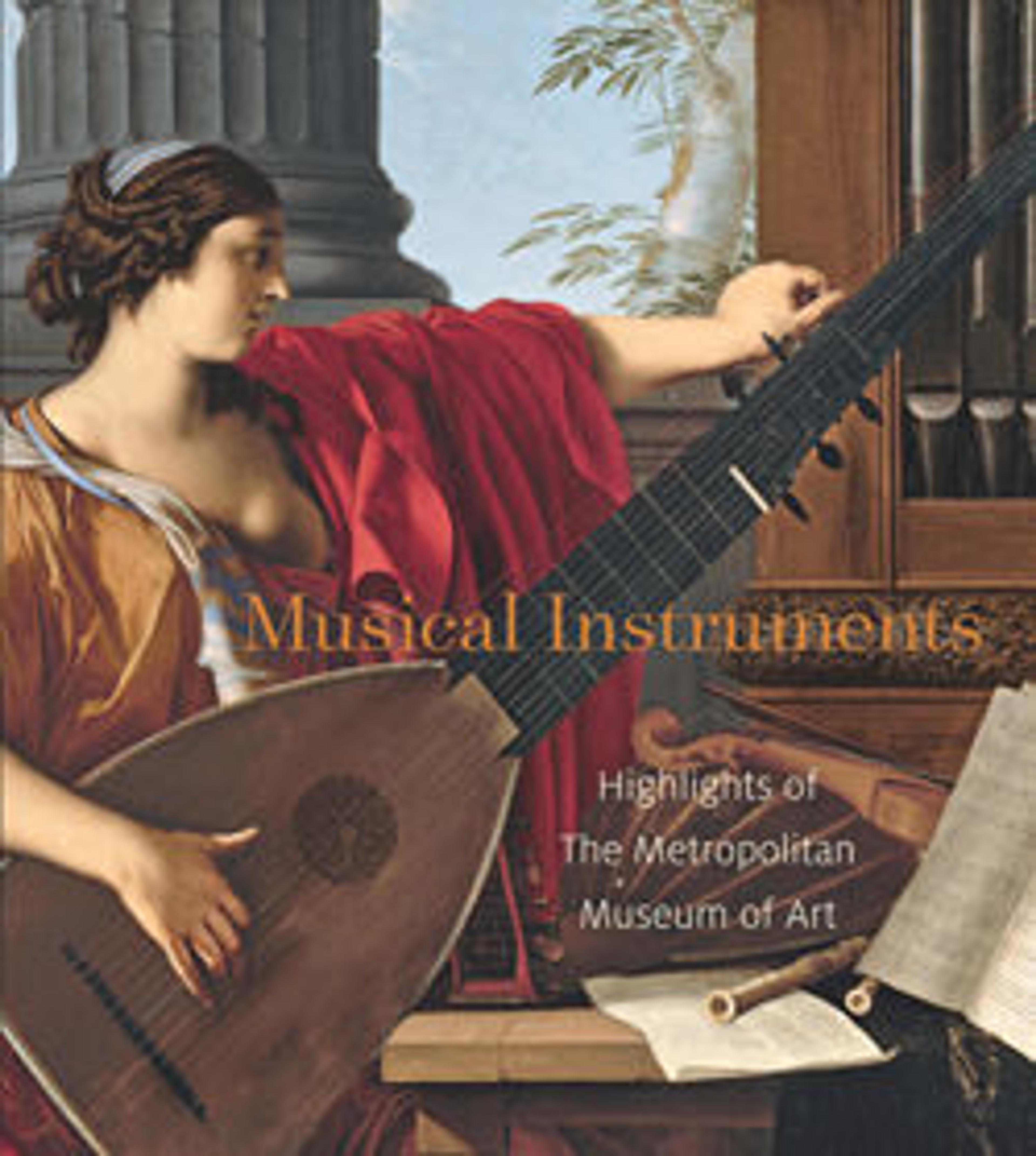Kamānche
Kamānches, or bowed lutes, are often elegantly inlaid or painted, but this example is decorated with minute pieces of wood, bone, and brass in a mosaic technique called "khatam-kari." First described in the tenth century, the kamanche is the earliest documented bowed instrument and is frequently depicted being played by angels in Persian miniatures. Held upright on its spike, it is bowed with the right hand in a palm-up position, a handgrip used when bowed instruments were introduced to Europe and one still used around the world when playing spike fiddles.
Artwork Details
- Title: Kamānche
- Date: ca. 1880
- Geography: Tehran, Iran (Persia)
- Culture: Iranian (Persian)
- Medium: Wood, metal, bone, gut
- Dimensions: Height: 40 1/2 in. (102.9 cm)
Width: 6 in. (15.3 cm)
Diameter: 5 1/2 in. (14 cm) - Classification: Chordophone-Lute-bowed-unfretted
- Credit Line: Purchase, Mr. and Mrs. Thatcher M. Brown III Gift, 1998
- Object Number: 1998.72
- Curatorial Department: Musical Instruments
Audio
9335. Kamanche
0:00
0:00
We're sorry, the transcript for this audio track is not available at this time. Please email info@metmuseum.org to request a transcript for this track.
Listen to more about this artwork
More Artwork
Research Resources
The Met provides unparalleled resources for research and welcomes an international community of students and scholars. The Met's Open Access API is where creators and researchers can connect to the The Met collection. Open Access data and public domain images are available for unrestricted commercial and noncommercial use without permission or fee.
To request images under copyright and other restrictions, please use this Image Request form.
Feedback
We continue to research and examine historical and cultural context for objects in The Met collection. If you have comments or questions about this object record, please complete and submit this form. The Museum looks forward to receiving your comments.
